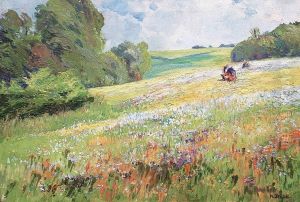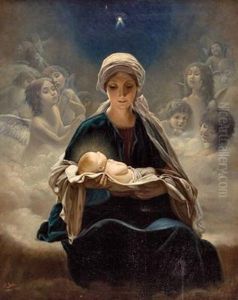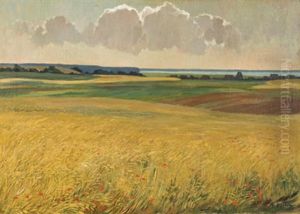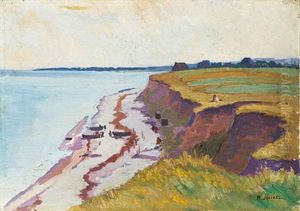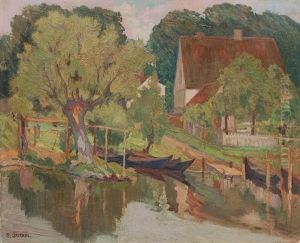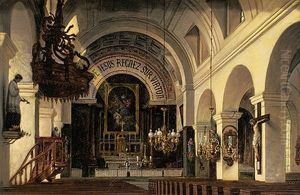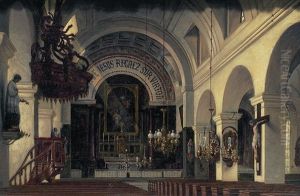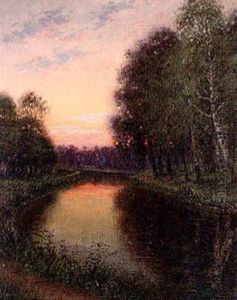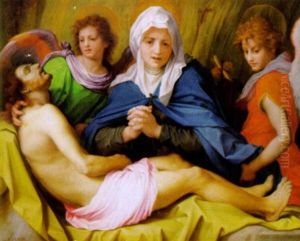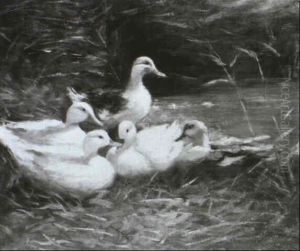Hugo Jaeckel Paintings
Hugo Jaeckel was a German artist, often associated with the Jugendstil movement, which is the German counterpart to Art Nouveau. Born on October 14, 1872, in Breslau, which was then part of Germany and is now Wrocław in Poland, Jaeckel became known for his graphic art, illustrations, and paintings that often featured floral and organic motifs, a hallmark of the Art Nouveau style. His work was characterized by elegant lines and often a sense of dynamism influenced by natural forms.
Jaeckel studied art at the Royal Art and School of Crafts in Breslau under the guidance of Albin Egger-Lienz and Otto Gußmann. He later moved to Munich, which was a hub for progressive German art at the time, to further his studies and immerse himself in the thriving art scene. Munich was a significant center for the Jugendstil movement, and Jaeckel would have been exposed to the works of other notable artists of the period, which likely influenced his own style and artistic development.
Throughout his career, Jaeckel contributed to several periodicals and illustrated books, which was a common practice for artists of the Jugendstil movement to disseminate their work to a broader audience. He created designs for magazines like 'Jugend,' which was a prominent art magazine of the time and a key platform for the Jugendstil movement, hence the name. His illustrations were often characterized by their intricate details and stylized nature, which were well received and contributed to the visual language of the period.
In addition to illustration, Jaeckel was also accomplished in traditional mediums such as oil painting and watercolor. His fine art pieces frequently included portraits and landscapes, which were rendered with the same attention to detail and stylization as his graphic works. Despite being less known today than some of his contemporaries, Jaeckel's work remains a testament to the Jugendstil movement's contributions to the evolution of modern art in Germany and beyond.
Hugo Jaeckel's artistic career was cut short by his untimely death on November 7, 1931. Though he passed away at the age of 59, his body of work continues to be appreciated by art historians and collectors who have an interest in Jugendstil and the broader Art Nouveau movement. His contributions to the visual arts of the late 19th and early 20th centuries are remembered as part of the rich tapestry of European art history.
